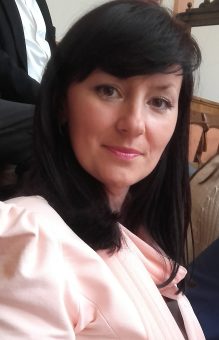
The Vinča Institute of Nuclear Sciences is the largest institute of national importance for the Republic of Serbia, operating under the University of Belgrade. It conducts multidisciplinary research with a particular focus on environmental protection. A healthy and safe environment is one of the fundamental prerequisites for human survival and the well-being of the living world. However, with economic progress comes the generation of large amounts of waste and its inadequate disposal, along with the emission of harmful gases and the greenhouse effect, which has led to climate change and the pollution of water, air, and soil.
Our multidisciplinary team within the Laboratory for Materials, which comprises PhDs in fields such as physical chemistry, technology, environmental protection, chemistry, biology, and mining, has been engaged for many years in solving problems across various disciplines. Members of our team have extensive experience in obtaining ecological, inexpensive, and readily available materials from different raw sources (biomass, mineral raw materials, etc.), as well as from waste (industrial, biowaste, etc.), with the aim of removing various pollutants (organic and inorganic) from the environment. All research is focused on finding the usable value of biowaste and waste generated in industrial production, while also educating and raising the ecological awareness of the population. This has been achieved through numerous completed projects, financed by various domestic and international sources.
IN FOCUS:
- Collapse of Energy Grids and Their Resilience in the 21st Century
- A School Project That Turns Waste PET Packaging into 3D Printing Filament
- Agrosolars – An Opportunity for Dual Development in Bosnia and Herzegovina
I would particularly emphasize the discovery of the usable value of food and green waste from parks and picnic areas, which is usually disposed of in landfills, along with addressing the global ecological problem of cyanobacteria and cyanotoxins appearing in water bodies. These studies represent a major challenge today, not only in Serbia and Europe but also globally. The greatest danger associated with cyanobacteria is the release of potentially carcinogenic cyanotoxins, which, at specific concentrations, can be lethal to plant and animal life, and in humans, can cause serious health problems as they quickly travel through the food chain. Through the development of an entirely new technology based on inexpensive and environmentally friendly activated carbon materials derived from food waste and green waste from parks and picnic areas, it has become possible to purify water contaminated with cyanobacteria and cyanotoxins by replacing expensive commercial carbons.
In addition to the above, I would like to point out that within our group, research has been conducted on the development of a new high-temperature ceramic adhesive incorporating waste sludge from wastewater treatment plants, intended for use as a sealing material in intermediate-temperature solid oxide fuel cells (IT–SOFC fuel cells). Solid oxide fuel cells represent the third generation of fuel cells for clean energy production and are the subject of research by many scientists worldwide. In recent years, modern society’s increasing tendency towards green technologies, which address concerns about growing fossil fuel consumption, has been on the rise. The adoption of so-called waste-to-wealth concepts in industry is becoming a primary focus of future scientific research. Accordingly, within our research, various tests were conducted on the innovative ceramic adhesive with added waste sludge, which confirmed environmental compatibility, good hermetic sealing, and stable operating voltages in the intermediate-temperature range of the cells, indicating potential applicability in IT–SOFC technology.
Marija Stojmenović
The story was published in Energy portal Magazine PURE ENERGY

